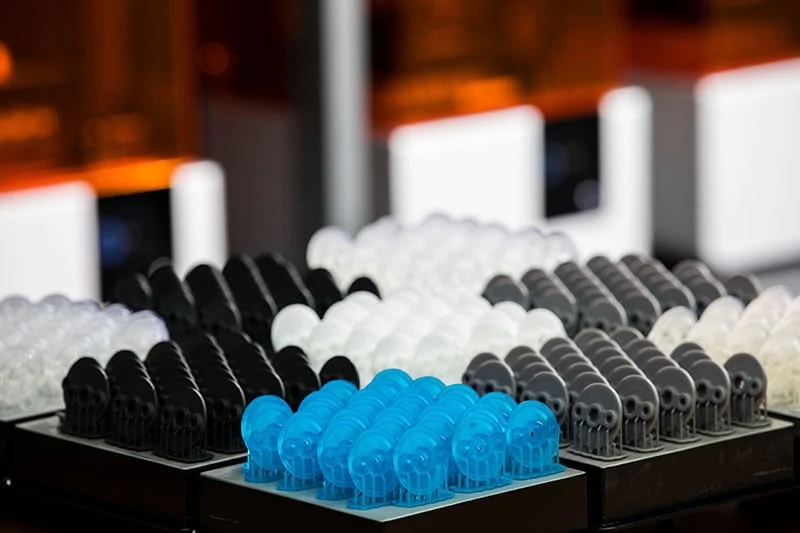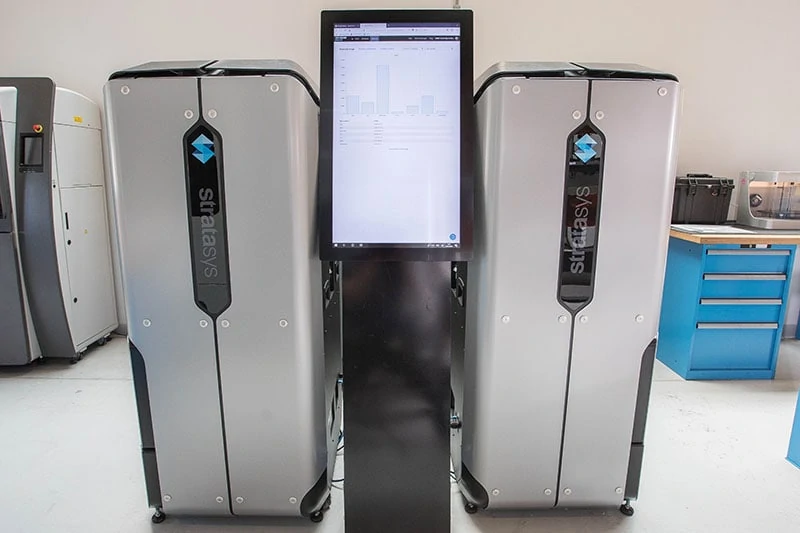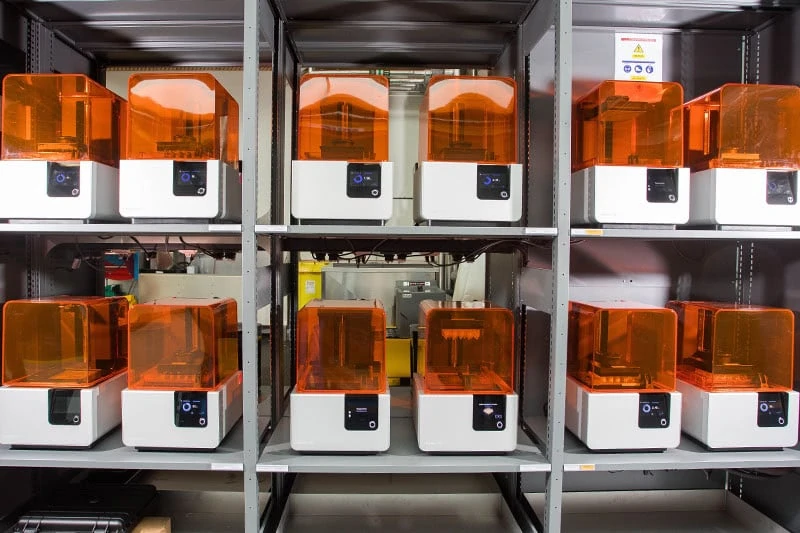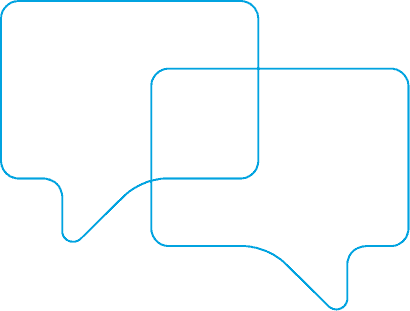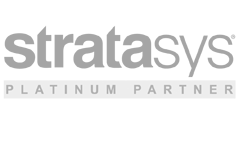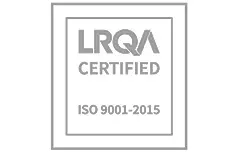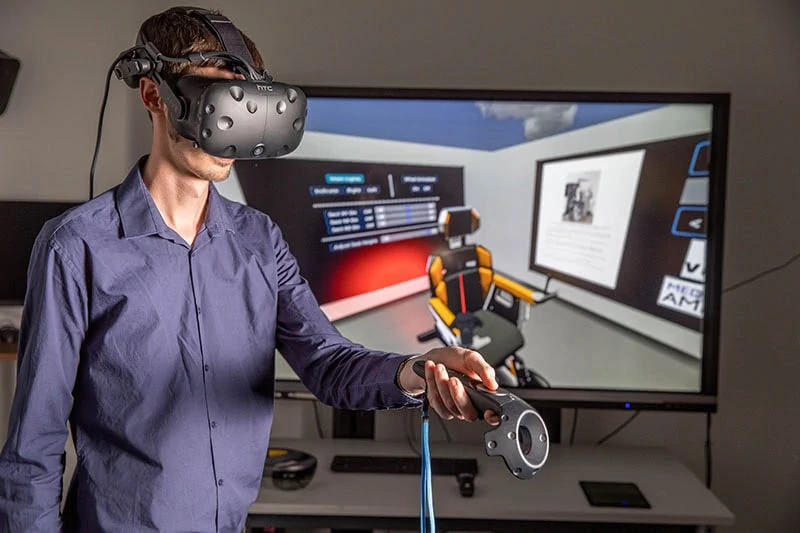
CASE STUDY: EDUCATION
The AMRC is ‘ahead of the game’ with additive manufacturing and Laser Lines
The University of Sheffield Advanced Manufacturing Research Centre (AMRC) is a network of world-leading research and innovation centres that work with manufacturing companies of any size around the globe. It specialises in carrying out cutting-edge, practical research into advanced machining, manufacturing and materials.
Thanks to the additive manufacturing (AM) machines supplied by Laser Lines, the research centre is working on projects that will move global manufacturing forward.
Background
Based in Rotherham, Preston and Broughton, its 125+ industrial partners range from global giants such as Boeing, Rolls-Royce, BAE Systems, McLaren and Airbus to SMEs. Businesses work with the AMRC, part of the High Value Manufacturing (HVM) Catapult, on one-off projects or join with them as a partner for long-term collaboration.
The AMRC employs over 500 highly qualified researchers and engineers from around the globe on its different sites and across its 11 core capabilities, which are:
- Machining
- Integrated manufacturing
- Composite manufacturing
- Casting
- Design and prototyping
- Structural testing
- Medical
- Additive manufacturing
- Microscopy
- Metrology
- Manufacturing intelligence
Mark Cocking, Polymer Additive Technical Lead at the AMRC, explains: “We work with major players in the aerospace and automotive arenas and also smaller specialist companies to help overcome manufacturing problems. The beauty of using the AMRC as an outsourced R&D department is that businesses are working with extremely experienced engineers. But, because we have moved from the commercial world into research, our remit is different. Instead of focusing on getting product out fast, we are able to take the time to work on new solutions.
“Sometimes in industry, it’s easy to get a bit stuck in the rut because you are using the tools that you have invested in and that are on site. The AMRC has a whole range of tools – both hardware and software – so we can try different methodologies, technology and options to shed new light on a project. Also, because we’re not manufacturing and focused on getting product out of the door, we can take the time to get the most out of a machine and really push the boundary on what it can do.”
Massive growth in additive manufacturing
The AMRC has been working with Laser Lines for over eight years. Mark adds: “On my first day, a 3D printer arrived. At that point, we had five staff in the Design and Prototyping Group (DPG). Now there are 40 staff and we have our own centre in Rotherham and considerably more additive manufacturing machines.
“When I joined, I really wanted to crack on with AM and could see that the equipment provided by Laser Lines could really be used to make a difference. About four years ago, our site grew and the interest in AM really exploded.”
At this point, recognising that there was a bottleneck that was making it difficult to keep up with requests, Mark introduced a training programme on site so that for the simpler AM systems, anyone on the site could print their own jobs. Now there are 200 trained staff who can use the equipment as and when they want. The 3D printing equipment is centrally funded and available to all in the AMRC.
Mark adds: “I wanted the 3D printers to be used like you would traditionally use a central photocopier, but I knew we had to get everybody up to a certain knowledge on the different technologies available. I wanted everyone to have a baseline understanding of additive manufacturing, so that our teams could talk confidently about the process and the materials with our partners.”
The training programme really took off and the number of printed parts has dramatically increased. Mark says: “We have gone from printing bits and bobs to 22,000 parts in one year. That is a huge amount for a research centre.”
3D printing equipment
Laser Lines has supplied the AMRC with the many of its additive manufacturing machines, which now include five Fortus FDM printers. Laser Lines also provides consumables and technical support for the machines.
Mark adds: “Laser Lines is a great company to work with and goes the extra mile helping with technical queries and supplying us with materials. It has a next day turnaround and nothing is too much trouble. There is always someone on hand to speak to for advice.
“Sometimes things don’t go to plan. With new machines you sometimes get gremlins. When that happens, Laser Lines is always keen to help with additional local support, involving the manufacturer or offering advanced training, and that has been fantastic for us.”
This also works both ways. Mark adds: “We help each other out. Our work helps to push 3D printing technology out into the UK, helping companies understand the benefits of AM and to adopt these technologies. We wouldn’t be doing this if it didn’t streamline ways of working.
“Using AM speeds things up, meaning a reduction in development cycle time. We are big fans of AM at the AMRC. Being able to demonstrate the benefits and show that it cuts costs, speeds up projects, delivers things faster and helps everyone get a quicker grip on design is really exciting.”
Helping out with the Covid-19 Emergency
Engineers from the AMRC’s Design and Prototyping Group (DPG) have responded to the national call to produce more Personal Protective Equipment (PPE) for healthcare workers and have been using the Fortus 900MC and F170 3D printers supplied by Laser Lines to make up to 1,000 face visors per week. The protective face visors are to keep Sheffield’s frontline NHS workers safe.
Currently, the shop floor at the AMRC’s Design and Prototyping Testing Centre has been transformed into an assembly production line with the team working tirelessly over the past few weeks to rapidly manufacture and assemble the essential face shields, as demand for vital PPE kit for healthcare workers continues to grow nationwide.
Demonstrating value and savings
The AMRC uses GrabCAD Print on all its Stratasys FDM machines. Mark has set the system up so that all the equipment can be daisy-chained on one large network across the AMRC sites.
He adds: “As well as having a more efficient production environment across all our sites, using GrabCAD Print helps with collating data. Analysing this data and seeing the cost savings we have achieved helps us to justify the costs of the machines.”
Future Plans
The AMRC is going from strength to strength and is looking to continue building on the network it has started setting up nationally.
Mark says: “The money we get to invest is public money from the Government, so I want to source equipment that will make a real difference when it goes back to industry.
“With Laser Lines’ help, this is a less daunting task. We are not sure what kind of working environment the future holds after Coronavirus, but knowledge-sharing and collaboration will certainly be key. In that respect, with Laser Lines, the AMRC is already ahead of the game.”
If you want to find out how 3D printing can help your business innovate faster and more efficiently, call Laser Lines on 01295 672599, or email [email protected]

